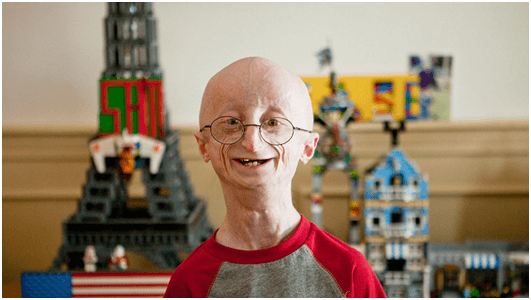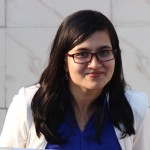From Genome to Syndrome : The Rare Disease Riddle
Feb 28, 2017
3305 Views
A is for Albinism, B is for Bloom’s, C is for Cat-eye… for almost every letter in the English alphabet, there is a rare disease which affects less than 1% of the population.
How are they caused? The answer can be found a little closer to home, literally. As diverse as they are in their complex symptoms, astonishing features and shocking abnormalities, these stories have a common beginning – inside the cell’s nucleus, rooted in DNA.
Facts about disease – some rare truths
-
- Heredity is very real – There are more than 7000 known rare diseases in the world. Most of the rare diseases in the world are inherited and are caused by genetic changes. (Note : Some cancer syndromes and infectious diseases are not hereditary)
-
- Bases in the bassinet – Almost half of the rare diseases manifest early, in very young children. Gene (and chromosome) alterations disrupt innate biological developments which could be physical, metabolic or neurological. For example, a single base (letter) change in important regions of DNA, can be a grave concern for doctors.
-
- Guessing is no child’s play – Two children could suffer from the same condition, yet be distinct in profile, clinically. Barring a few obvious symptoms, rare diseases vary a lot between patients. Misdiagnosis is quite common in such cases, putting the affected individual at a high risk for severe disability.
-
- Remembering our roots – Certain mutations occur in high frequencies in their founder populations (eg., Ashkenazi Jews, Amish, South Africa etc). The corresponding disorders have an increased occurrence in those populations, due to consanguinity. Marriages between first-degree relatives are linked with a high risk for autosomal recessive disease, wherein both the parents pass on a faulty gene to their child. Here’s a fascinating example – The Blue Fugates of Kentucky represent a family with methemoglobinemia. The condition causes a blue coloring in the skin. Genetic anomaly (in the CYB5R3 gene) has been carried forward, due to inbreeding over 6-7 generations.
-
- Discovering the magic pill – Given their extremely low prevalence rates, rare diseases were tough to manage, a few decades ago. “Orphan” drugs (specialized drugs used to treat rare disease) had to be developed by pharmaceutical firms and made accessible to patients, globally. This was implemented through certain regulations such as those of the European Union (EU) and the Orphan Drug Act of 1983 (USA).
-
- Eccentric examples – Quadruped behaviour (walking on all fours), hair growth which resembles a werewolf, progeria (Bachchan Sr got that right), smelling like fish ALL the time, etc., are found in people with super-rare genetic mutations, some of which could be fatal.

Sam Berns was a 17-year old American who dedicated his efforts to spreading awareness about progeria. 4 years after the Indian film “Paa” was released, a documentary, “Life According to Sam” was filmed in 2013, telling his story to millions of people.
Genomics in healthcare – The final piece in the puzzle?
The discovery of genes and inheritance (thank you, Mendel!) paved way for tremendous development in medicine. Assessment of patients suffering from rare diseases is a multi-tier process which involves clinical evaluation, identification of known (or unknown) symptoms, detailed study of family history, risk stratification, potential therapeutic strategies and management regimes. Genetic studies, when executed as a part of this procedure, provides valuable clues which lead to diagnostic confirmation. But this protocol is easier explained than done.
Genomics can help overcome many challenges faced by the medical community, such as those mentioned below.
- A lot of times, first-hand information about the disease is received only upon onset. This could happen in a hospital ward, either during childbirth (newborns) or much after. Awareness drive in families, access to screening options and guidance support need to be practised in institute/hospital. The establishment of more genetic analysis units, is one such step, towards better healthcare.
- Some conditions are so rare that there are <100 known individuals with the disease. When new cases are undetected or undiagnosed, it makes intervention very difficult. If the individual’s health has already been compromised, the chances of prolonged survival are reduced.
- Medical data (including genetic etiology) of every disease needs to be available with clinicians and counselors alike.
- Molecular changes such as chromosomal rearrangements, gene duplications, deletions, protein alterations, etc., are associated with serious deformities, blood disorders and metabolic deficiencies which could be irreversible. Carrier status (presence/absence of such defects) followed by informed decision making (a.k.a reproductive planning) reduces disease burden in affected families.
What determines a child’s fate, once brought into this world? Maybe it is the hand that rocks the cradle (i.e, the all-powerful mother’s love) – but science disagrees. Both the parents pass on an everlasting legacy to the child, which is imprinted in every cell. Is it safe to say that life’s journey is predetermined? We will leave that discussion to another time!
I am the family face;
Flesh perishes, I live on,
Projecting trait and trace
Through time to times anon,
And leaping from place to place
Over oblivion.
The years-heired feature that can
In curve and voice and eye
Despise the human span
Of durance — that is I;
The eternal thing in man,
That heeds no call to die
–Thomas Hardy, on Heredity
About the Author

Rasika is the product specialist and scientific liaison for Mapmygenome’s personal genomics portfolio. With eight years of experience in sequencing, molecular biology, genetic data analysis and reporting, she currently works in the product team at Mapmygenome. Her key responsibilities include genomics product development, data curation, scientific content creation and management, data analysis and technical support for business development. Her key strength is a robust understanding of consumer genomics, including specialized areas such as pharmacogenomics, nutrigenomics and sports genomics. Rasika is also a certified group fitness trainer and Pilates (Balanced Body) Mat instructor.
